Sorry, there are no products in this collection.
The Art of The Curve: A Deep Dive into Curved Sword Mastery
There's an allure to the curved sword that transcends the mere practicalities of a weapon. This isn't just a piece of sharpened steel; it's a reflection of the cultures and traditions that have forged it. From Arabian Scimitars to Japanese Katana, the world and mythos surrounding these graceful instruments are as vast as history itself. In this comprehensive exploration of the curved sword, we'll look beyond its striking aesthetics to understand the engineering marvels, the martial philosophies, and the sheer romance behind the art.
The Craft in the Curve: Artistic and Engineering Marvels of the Curved Sword
Craftsmen of curved swords are artists and engineers in equal measure. They blend the raw materials of steel with fire, knowledge, and years of experience to create a weapon that's not only effective but also a thing of beauty. For centuries, the curve has been carefully measured to balance the blade's weight, ensuring its resilience in battle and precision in the cut.
Mechanical Advantage
The curved design of these swords provides a unique mechanical advantage. The blade's curvature translates the force of a swing into a focused cut, allowing for smoother execution that demands less exertion from the wielder, a crucial factor in prolonged combat.
Aesthetic Precision
The aesthetics of a curved sword are not arbitrary; every line, every arch, is deliberate and carries cultural or functional significance. Decorative etchings and inlays serve both to dazzle the eye and to communicate messages of lineage and honor.
The Damascus Katana
The intertwining patterns of the Damascus steel Katana are nothing short of legendary. Forging the stark, rippling designs requires a master to blend and fold the metal hundreds of times, each fold breathing life and character into the blade.
Tradition and Culture: The Curved Sword as a Historic Symbol
Beyond functionality, the curved sword is a cultural milestone, deeply entwined with the history and identity of many nations and peoples.
The Samurai Sword
Perhaps no curved sword is as famed as the Japanese Katana. For the samurai, their swords, often considered sacred, were extensions of the soul. The Katana embodies the ancient Bushido code, a path of honor and integrity that mirrored the blade's own measured strength and sharpness.
The Arabian Scimitar
With its iconic sickle-like blade, the Arabian scimitar is synonymous with tales of deserts, caravans, and adventure. It too has its own mythos, often depicted as the choice weapon of desert warriors.
The Kilij of the Ottomans
The Kilij, the curved sword of the Ottomans, was a staple in the conquests and defense of one of history's most significant empires. Its distinctive scabbard held a design that allowed the blade to be drawn with a flourish, a symbolic start to any skirmish or negotiation.
The Dance of Techniques: Wielding the Curved Sword in Combat
To wield a curved sword is to partake in a dance of centuries-old techniques. Precision and finesse are necessary to harness the potential of its curve, to know when to parry and when to strike.
The Kata of the Katana
Kata, the traditional forms of Japanese martial arts, are the foundation for mastering the Katana. Each movement tells a story of discipline and control, and repetition of these forms hones a practitioner's skill to lethal perfection.
The Fluidity of the Scimitar
The fluid, continuous motions when using a scimitar reflect the agility it demands. In battle, the curved design allows for striking from unique angles, playing to the Scimitar's strengths in quick, mobile combat styles.
Technical Mastery of the Kilij
The Kilij's distinctive curve enables whirling strikes that can disarm and disembowel with brutal efficiency. Mastery of this weapon is a testament to the warrior's strategic mind and physical prowess.
Curvature in Contemporary Context: Curved Swords Today
While the days of battlefield duels may be behind us, the legacy of the curved sword lives on in multiple facets of modern society.
Collectors and Enthusiasts
For collectors, a curved sword is more than an object; it's a gateway to history. The thrill of ownership lies in the tangible connection to a culture's golden age, a silent witness to centuries of stories waiting to be unveiled.
Martial Arts and Recreation
Martial arts disciplines continue to teach the ways of the curved sword. In dojos and training grounds around the globe, students of the blade learn ancient techniques that still astound in their effectiveness and grace.
Art and Expression
The curve of a sword has inspired countless artists. From movie directors to authors, the romance of the curved sword has sparked imaginations, becoming a canvas for stories and spectacles.
Final Thoughts: The Eternal Elegance of the Curved Sword
The curved sword is artistry frozen in time, history written in steel. Whether you seek one for its historical weight, the perfection of its craft, or simply for the poetry in its very existence, the curved sword offers something for every seeker. Its tale is one of unbroken elegance, from the war-torn battlefields of the past to the contemporary showcases of art and honor.
For those captivated by the curve, the sword is more than a relic; it is a living bond to an enduring legacy of skill and spirit. For those yet to be enchanted, the world of the curved sword stands as an open invitation—a world rich with culture and craft, it awaits discovery and appreciation.

